Double down on SEO? Start a Google Ads campaign? Pour money into LSAs? You have options. The big question is — what option do you choose?
Generating leads for your law firm isn’t as difficult as you think. But of course, there’s no cookie cutter approach. Geography, practice area and budget play a huge role in deciding what direction you take when thinking about digital marketing.
I get asked all the time for insights on law firm SEO and PPC. The most common:
- How much will it cost?
- How long will it take to get results?
- Should I be doing this or something else?
I always answer these questions the most lawyerly way I can… “It depends.” And it really does. But when it comes to making informed marketing decisions, there’s a few things your firm needs to know:
Google Business vs. Google Ads vs. Local Services Ads (LSAs)
Before we get into which channel will be the most profitable and drive the most impact for your law firm, it probably makes sense to explain what each of these channels are.
Google Business
A Google Business Profile (formerly called Google My Business) is a free local listing from Google that allows businesses to appear in local results, and display information and reviews about their business. If you have ever typed a search into Google looking for a local business, you have almost certainly found the “Map Pack,” which contains three featured business listings.
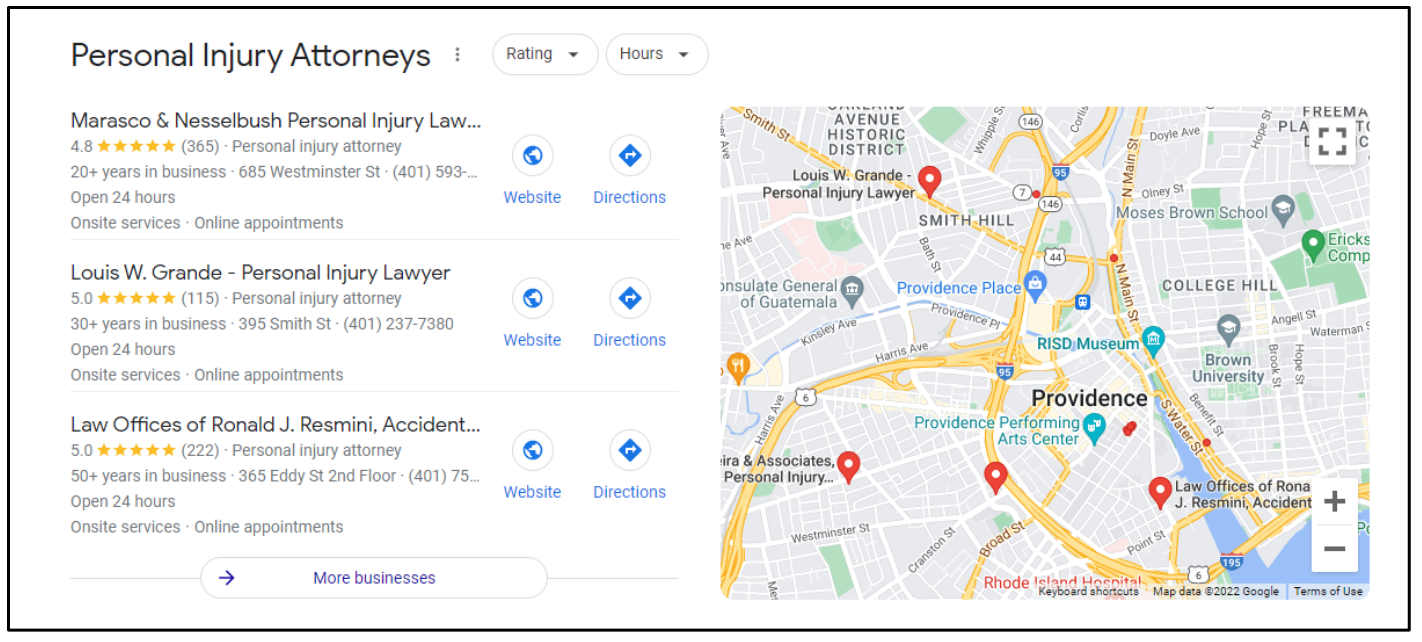
Google Ads
Google Search Ads are what most people think about when they think of Google Ads. They’re also called Pay Per Click ads — which essentially means when someone clicks on your ad, you get charged whether that person becomes a lead or not.
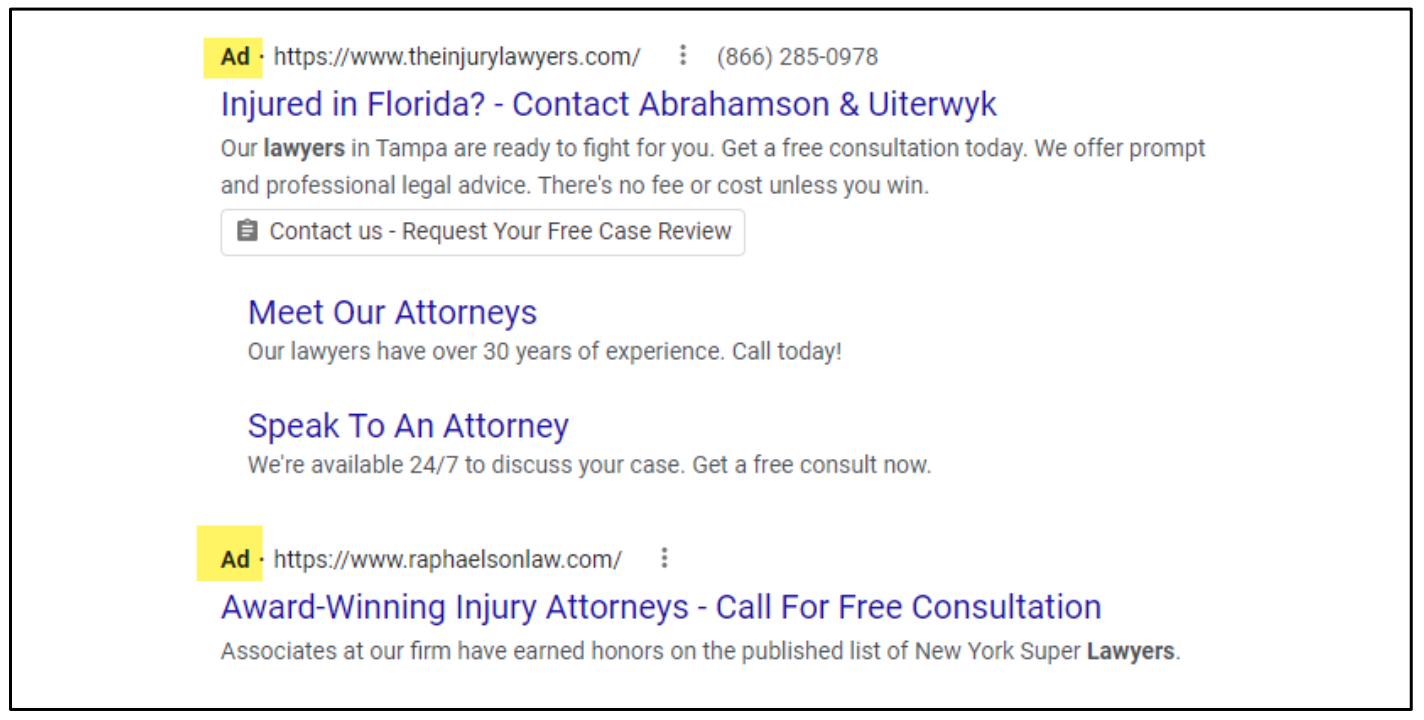
Local Services Ads (LSAs)
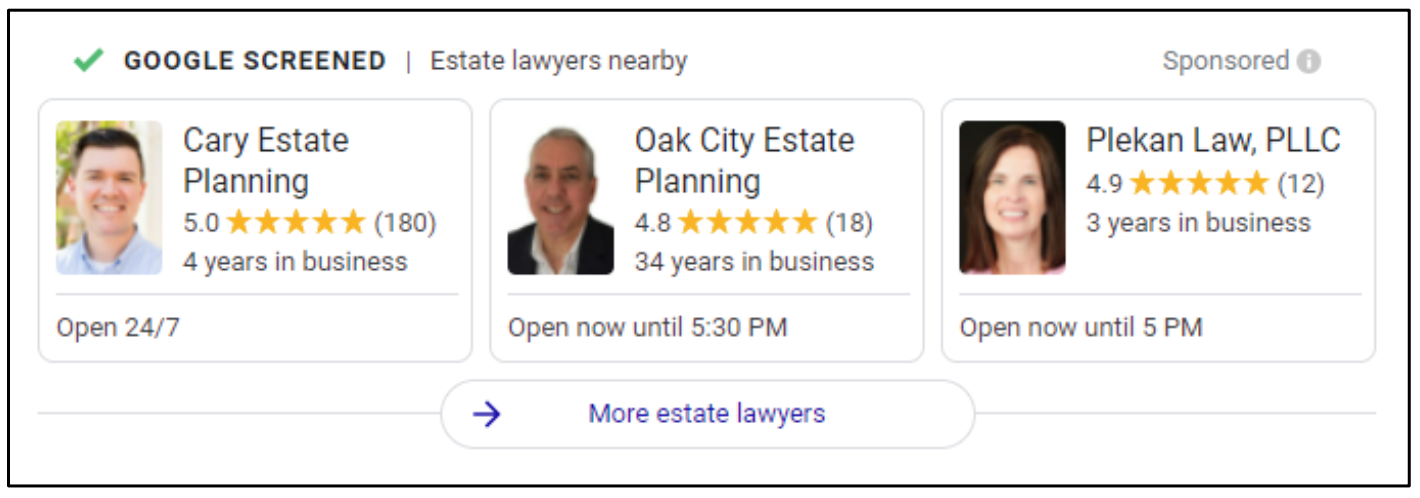
Location, Location, Location
One thing to note about each of these Google products is that they are ALL located above the fold — which is a marketing term that refers to what is visible on your screen without having to scroll.
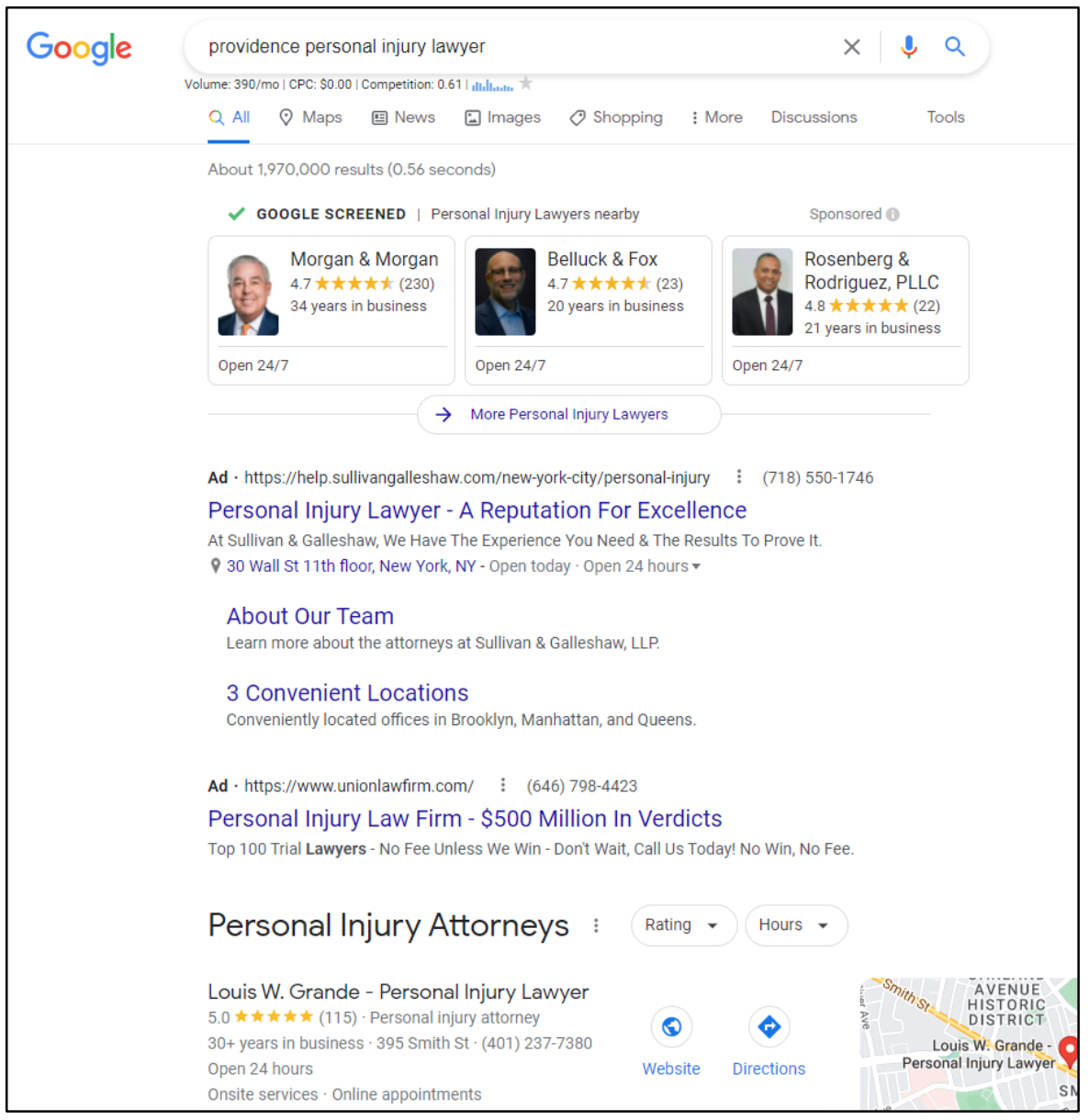
As you can see, Google is putting more emphasis on its paid products. For high-intent local search queries, traditional organic results are not even visible — neither are all of the map listings. What does this mean for you? It means that being “#1 in Google” isn’t relevant anymore.
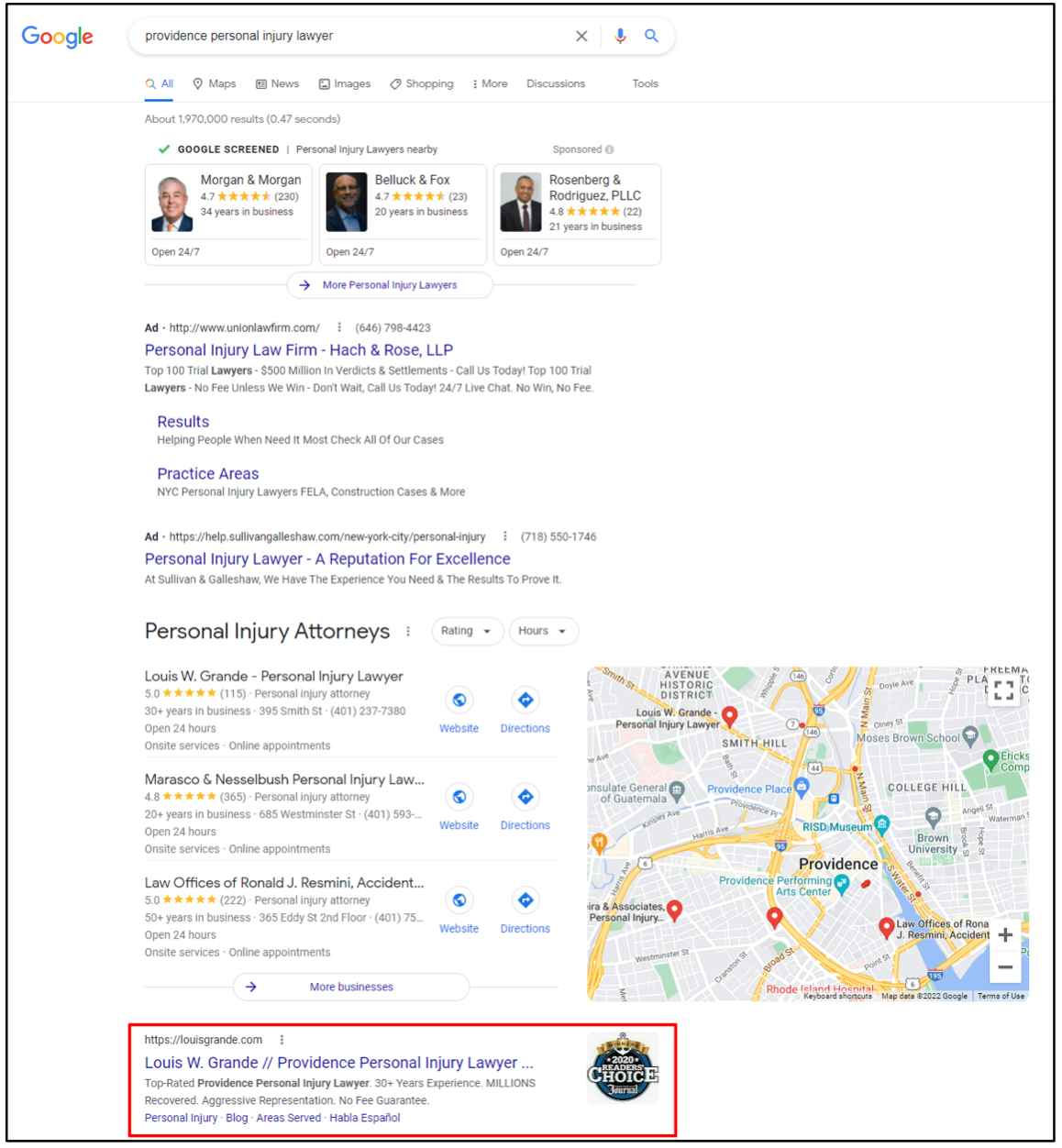
As you can see in the screenshot, you have to scroll by multiple LSAs, Search Ads and Map Listings BEFORE you even get to “#1 in Google”.
So, what do you do?
Answer: Be everywhere.
How to Generate More Legal Leads from Google
As a general rule of thumb, start with what’s free. Next, focus on where you can pay for results. Lastly, test pay per click to see if you can lower your cost per lead.
1. Start with your Google Business Profile
Google Map listings are the most trusted and produce the most qualified leads — assuming you are visible.
The first thing you should do is create a Google Business Profile.
It’s free, and with some good reviews, this channel will generate the highest quality leads for your practice, nine times out of ten.
Plus, you need a Google Business profile to launch LSAs, which is what we will talk about next.
Think about what you see first on the page.
- LSAs
- Search Ads
- Google Maps
- Organic Listings
Prioritizing your efforts based on what you see first on the page makes sense because that is what your potential clients see first, too.
All it takes is turning on the ads to get to Page 1.
Now, obviously paid advertising requires a budget, so if you don’t have one you should double down on focusing on Google Business.
But if you do have a budget…
2. Test Local Services Ads
Firms with smaller budgets should always start with LSAs because you are only charged when people actually make contact with your firm.
You won’t be charged for clicks — only calls and messages.
This allows you to control your budget a little more. LSAs are also easier to set up than Google Ads — most attorneys should have zero problem getting everything set up themselves.
As with any marketing campaign, you should set expectations.
Not all practice areas will perform the same. Each performs a little differently.
Personal injury is hit or miss. You can have a few great ones come through and then be stuck with goose eggs for weeks.
Some locations are so competitive it is nearly impossible to actually get any exposure when you have a new profile and few reviews.
However, LSAs work really well for estate planning and divorce.
3. Launch a Google Ads Search Campaign
Search ads do really well for any practice area where the client needs immediate attention.
Think criminal defense, DUIs, traffic tickets, VA disability, etc.
Any time the client has a forced timeline, ads do well.
For criminal defense, it makes sense, right?
Less impulse control, more likely to click on the first thing they see.
The problem is, Google Ads has a bit of a learning curve.
Unless you have experience, you’ll likely run into some challenges navigating the platform and setting everything up correctly.
Your practice area will play a huge role in how you use this channel.
For example, most people should stay away from using Search Ads to target personal injury clients. The cost per click can easily be anywhere from $40 – $80 — all the way upwards of $100+ per click!
You see the opposite in other practice areas.
Estate planning is a good example.
People know they need an estate plan, but will happily kick the can down the road until they make a decision. This means when you are running PPC ads, you’re likely getting clicks from people who may be interested, but are likely just looking for information at the moment.
This drives up the cost per lead.
That’s why LSAs are a better option for estate planning.
Same goes for divorce. A business owner with millions in the bank and another person living on their mom’s sofa would still search “divorce lawyer”. This makes it very easy to end up paying too much per lead if you don’t watch what you are doing.
How to Track Lead Quality Using Analytics
Now that we have prioritized our Google strategy based on page position and chose the best channel by practice area, we need to make sure we know what is working — and what’s not.
The easiest way to understand what channel performs the best for you is to 1) use a CRM and 2) use call tracking software.
CallRail Call Tracking lets you see exactly who called, texted or filled out a form.
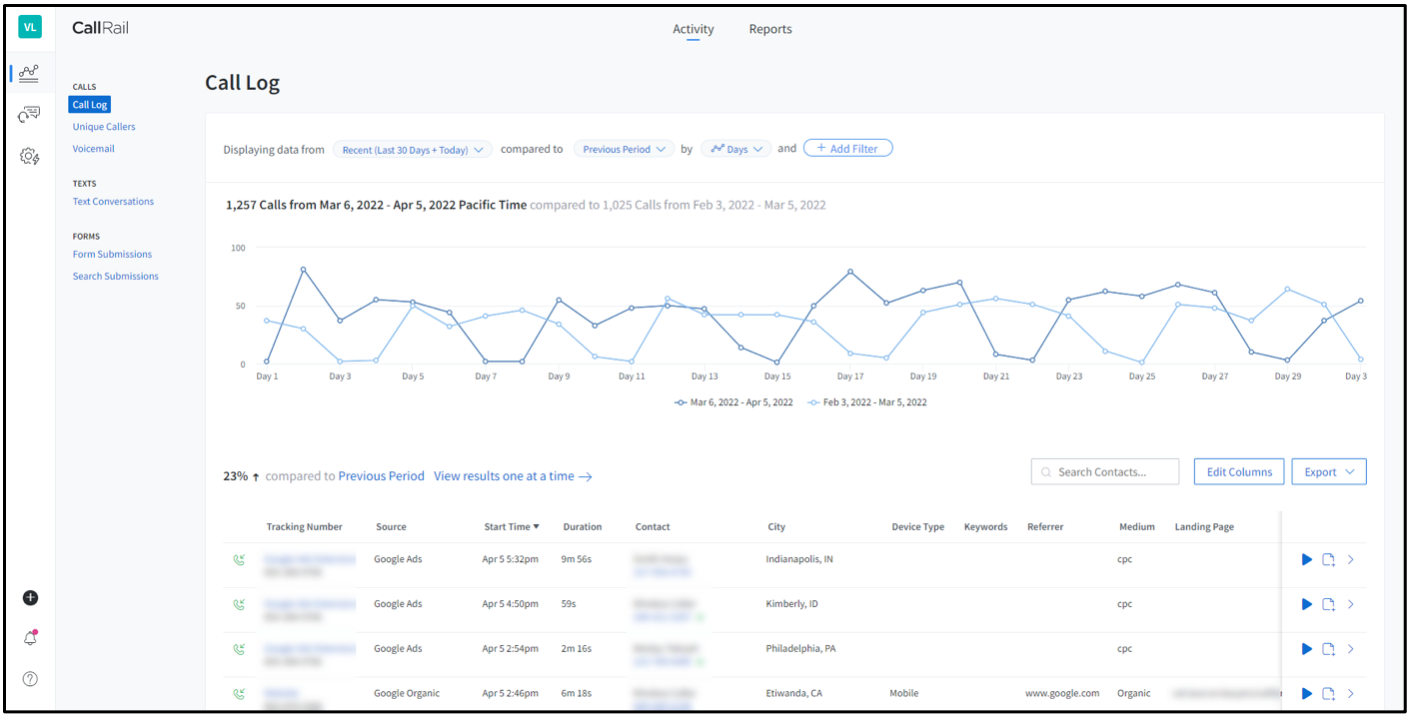
You can listen to calls, see what pages they visited and what conversion action they took. And then, you can use Zapier and CallRail’s native integrations to map to your CRM.
Conclusion
Ultimately, the name of the game is not focusing on ONE channel — it’s having all of Google’s products working together so your firm takes up multiple positions on Page 1.
To learn more about best practices to maximize paid spend for your firm, check out this Content Hub from CallRail and a free PPC audit.

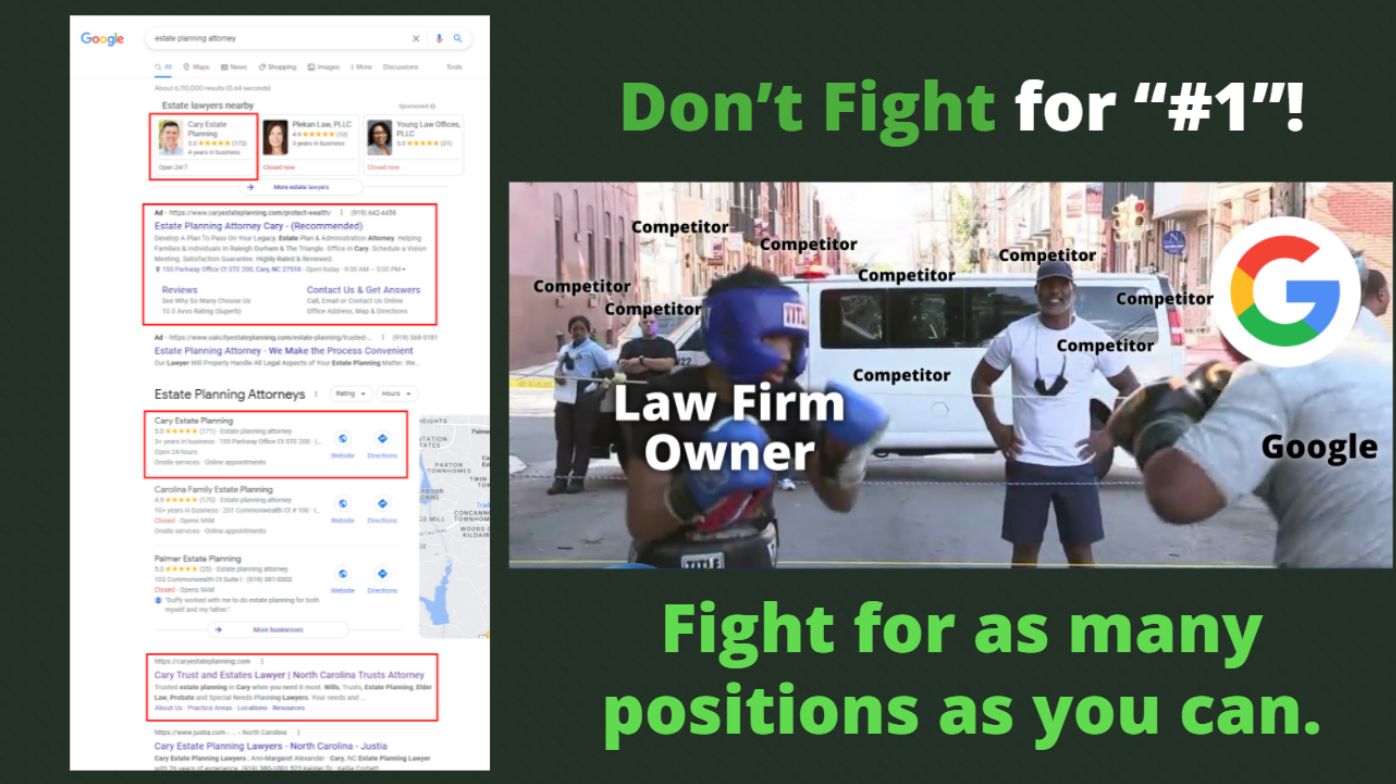
Join the conversation!